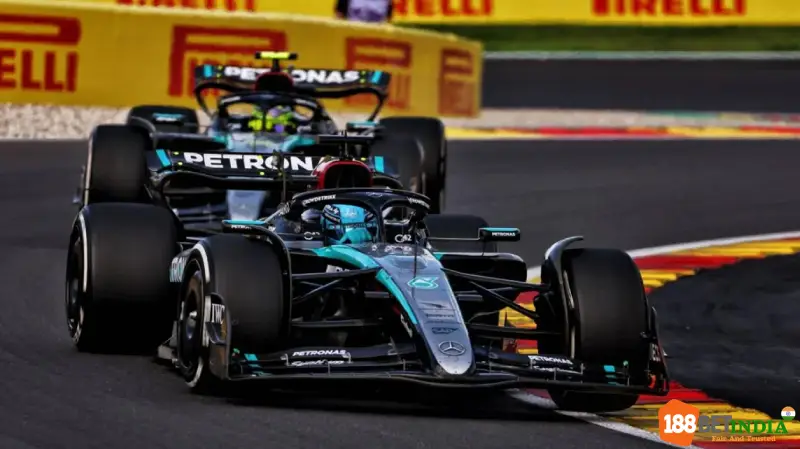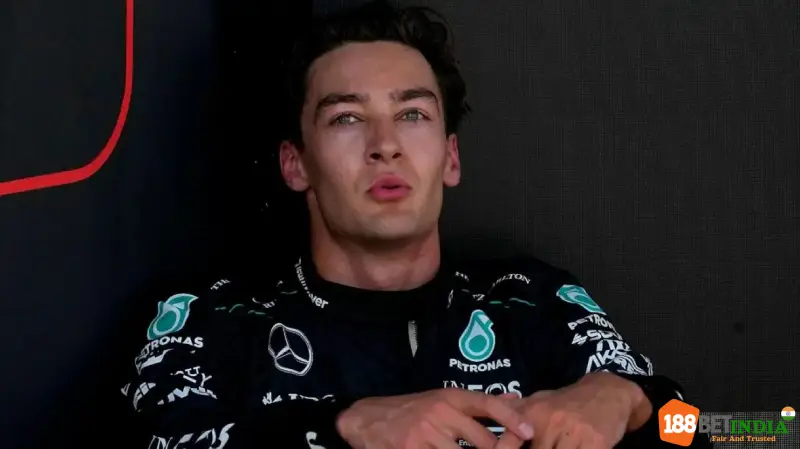In the thrilling world of Formula One, races are often decided by the smallest of margins, usually measured in tenths of a second at the finish line. However, in a surprising turn of events at Sunday’s Belgian Grand Prix, a different kind of small margin – measured in kilograms – cost George Russell a much-deserved victory.

The Agony of Disqualification
George Russell crossed the finish line jubilantly, leading his Mercedes teammate Lewis Hamilton by 0.526 seconds. However, just two hours later, his joy turned to heartbreak. An investigation revealed that Russell’s car was underweight by 1.5kg, tipping the FIA scales at 796.5kg instead of the required 798kg. This violation of F1’s technical regulations left Mercedes and Russell with no choice but to accept the disqualification.
“We have to take it on the chin,” team principal Toto Wolff said after the race. “We have clearly made a mistake and need to ensure we learn from it.”
Russell himself expressed his disappointment in a social media post, calling the disqualification “heartbreaking.”
The Weight of the Issue
In F1, every last detail is meticulously accounted for and checked multiple times. It’s rare for a car to be found underweight post-race. Teams usually design cars to be as light as possible but use ballast to ensure they meet the minimum weight requirements.
The last notable instance of a car being disqualified for being underweight was in 2006, when Robert Kubica’s BMW was 2kg underweight at the Hungarian Grand Prix. However, Russell’s Mercedes crossed the line intact, ruling out crash damage as an excuse.
Mercedes’ initial investigation pointed towards the one-stop strategy Russell employed to win the race. By making a single set of hard compound tires last 34 laps, Russell’s car managed to jump from fifth place to the lead as other drivers made their second pit stops.
The Gamble That Didn’t Pay Off
Russell’s strategy was a gamble. Most teams believed a two-stop strategy would be the fastest way to the finish. When Russell suggested a one-stop over the team radio, Mercedes’ strategy modeling indicated that he would finish fifth regardless of whether he took one stop or two.
“We have these race planners that tell us where the cars are going to come out at the end,” Wolff explained. “At some stage, we saw we had to cover [Oscar] Piastri and [Charles] Leclerc with Lewis, so [putting Hamilton on a two-stop strategy] was clear cut. Nobody expected the hard tires to last, but we went longer and longer, and then the planners said P5 for George in either case.”
As Russell’s stint continued, he took the lead when Piastri made his second stop. Remarkably, his tires remained in good shape, and the performance did not drop off as expected. However, the physical rubber on the tire was still wearing away. F1 tires can lose up to 3kg in wear during a long stint, and Russell’s second stint was longer than any other driver in the race and longer than Mercedes had anticipated.
The Unusual Factors
Several unique factors at Spa-Francorchamps contributed to the oversight. Mercedes had not run the hard compound tire at any point during the weekend before putting it on Russell’s car for the race. Additionally, significant setup changes were made after Friday practice, and rain on Saturday’s final practice meant there was no dry running to gauge tire wear accurately.
Another unique aspect of Spa-Francorchamps is the lack of a cooldown lap after the chequered flag. Drivers typically stray into run-off areas to pick up rubber and debris on their tires, adding up to 2kg in weight. However, at Spa, drivers take an immediate right after Turn 1 and drive the wrong way down the pit lane to parc ferme, missing out on this opportunity.
Frequently Asked Questions
George Russell was disqualified because his car was found to weigh less than 1.5 kilograms, violating F1’s technical regulations.
George Russell initially won the race, 0.526 seconds ahead of his teammate Lewis Hamilton.
Mercedes accepted the disqualification decision, with team principal Toto Wolff saying they made a mistake and needed to learn from it.
The primary factor is excessive tire wear caused by the one-stop strategy. Other factors include the unique conditions at Spa and significant set-up changes following Friday’s training session.
Toto Wolff said: “We have to accept it. We obviously made a mistake and we need to make sure we learn from it.”
The last time a car was disqualified for underweight was in 2006, when Robert Kubica’s BMW was disqualified at the Hungarian Grand Prix for weighing less than 2 kilograms.

Conclusion
While these factors make Mercedes’ mistake more understandable, they do not excuse it. Mercedes will spend the coming days fully investigating the oversight to ensure it doesn’t happen again. Despite the disqualification, George Russell’s performance was nothing short of stellar, showcasing his talent and the strategic risks teams often take in the pursuit of victory.
As Toto Wolff aptly put it, “We won’t be making any excuses. It is clearly not good enough, and we need to make sure it doesn’t happen again.”
